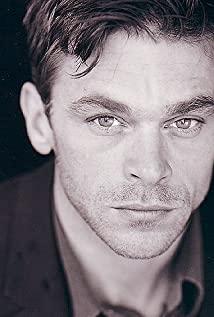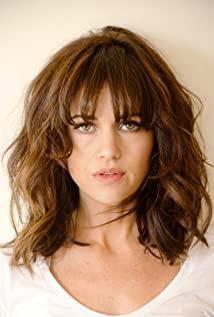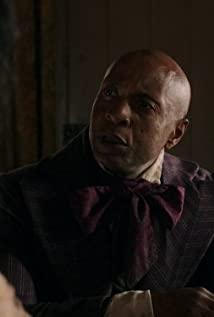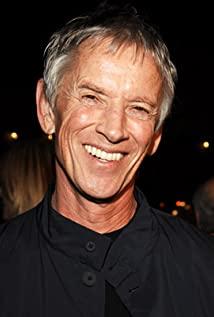you have all the weapons you need
In Visual Pleasure and Narrative Cinema, Laura Mulvey proposes that classic Hollywood films present women as objects of sexual desire, who are objectified as visual spectacles, viewed by both male characters in the film and by off-screen audiences .
Zack Snyder seems to have thoroughly researched Laura Mulvey's theory and put it into practice as a reference. In the 2011 film Pretty Girl, he dressed the film's five main characters in JK uniforms, corsets and garters, placing them in madhouses, dance clubs, and various wargame scenes , aiming at the high point of the otaku group to implement precise sniping.
It wasn't until the film was pulled from theaters and the director's cut was released on Blu-ray that audiences realized that Zack Snyder's purpose wasn't as simple as pleasing nerds. As early as in the film's publicity interview, when asked by a reporter why the protagonists were dressed like that, Zha Dao already pointed out the irony: "It's not the costumes that I choose for those girls, it's the audience that chooses them for them. The costumes, the audience wanted to see a girl dressed like that before walking into the cinema."
Going back to the movie in this context, all those scenes in the movie that satisfy the audience's lust and fetish have a different meaning. Zack Snyder highlights the violence and exploitation of women in a patriarchal social order by portraying the girls in the film as best suited to what our culture wants them to be. The layers of narrative nesting structure adopted in the film correspond in turn to the physical violence, sexual violence and spiritual violence faced by women in the growing environment.
The story on the first floor is set in a lunatic asylum. The little girl "Doll" shoots her stepfather in order to save her sister, but unexpectedly kills her sister by mistake. The stepfather takes this opportunity to send the doll to the lunatic asylum, thus occupying the inheritance left by the doll's mother to her daughter. The story on this level is the only one in the film that takes place in reality. The stepfather bribes the nurse to send the doll to the operating table. One second before the prefrontal lobectomy, the doll imagines another two stories.
As a frequent dramatic scene in literary works, the madhouse represents a strict power environment. Foucault pointed out in Madness and Civilization that madmen are considered symbols of irrationality, and the construction of madhouses separates these madmen from rational and normal people. In the asylum, the doctor has absolute authority, and the patient is therefore subject to spiritual and moral restraint and discipline. From this, Foucault sees the foundation of the power system: knowledge that represents reason is constructed by power, not the product of objective neutrality as we imagine.
The film takes place in the 1950s, a period in which mental hospitals in the name of psychological research flourished with Freud's push for psychiatry. The lunatic asylum in the movie, as Foucault describes it, is a hierarchical power system that forms a control-obedience relationship in the order of doctors, nurses, and patients. Doctors have the supreme power, they can decide whether a patient needs to undergo prefrontal lobectomy; nurses use their power to deceive doctors upwards and sexually abuse patients downwards; and patients, due to the lack of voice (no one believes the words of lunatics), become Lambs to be slaughtered, perhaps the metaphor in the second story is more straightforward - they are playthings for people to watch.
And what I want to point out is that the story setting of the madhouse is not just for the individual encounters of the protagonist "doll". In fact, this story model is a good metaphor for the spiritual suppression of women in our society. In our society, it is generally believed that women are more emotional and men are more rational, and women have become symbols of irrationality. On this basis, men have established a more rational authority for themselves, and thus constructed a rational knowledge system. . Women's dissatisfaction with this system is considered a normal reflection of women's "sensibility", and thus is not worth mentioning; thus, the voice of women in history has been erased, and there are still differences in different industries. The root cause of this degree of sexism lies in this male-dominated power system that has lasted for thousands of years.
The mental violence against women is built on the basis of sexual violence, and the second story of the film is a straightforward demonstration of the sexual exploitation of girls by the club's owners, employees, customers, and the audience sitting in the movie theater. "They walked into the cinema with the feeling of walking into a brothel." Zha Dao mercilessly exposed the hypocrisy of the audience.
In the previous story, the female doctor at the top of the power relationship is reversed with the nurse in this story. The nurse becomes the owner of the dance club, and the female doctor becomes his manager and is responsible for guiding the girls' dance choreography. This reversal of roles suggests to us that in the asylum story, the only people who really profit from the system of power are those who make the rules, use them, get money (stepfathers), power (carers) or body (client).
And the girls' escape plan is a resistance to this system. They realize that in the club their personalities are deprived, they are just playthings to satisfy the pleasure of customers, tools for the boss to make money, and they are actually dead in the club. The escape plan requires five items, a map, a lighter, a knife, a key, and a determination to yearn for freedom, which correspond to the five girls who plan to escape, and they need to be obtained in turn through cooperation. The way to get the props is the shackles they are trapped in here, and the only weapon they have - sex.
But Zadeo is very smart. He doesn't shoot sex directly. He says it's dancing. It's the doll dance that's so good that people can't take their eyes off it. But he doesn't shoot song and dance scenes, after all, he's not Bob Fosse. , so he replaced dance with fighting, which he was best at. Zack Snyder really knows how to shoot battle scenes well, the fast cuts and elevated back-and-forth give the shot a dance-like rhythm, the almost solemnity of the characters' movements, muscles, and expressions in almost static slow motion The sculptural feeling makes it difficult for the audience to deny the visual pleasure brought by adrenaline during the viewing process.
Every time the girls obtain props, it is a battle. Zha Dao packs the battle scenes into extremely realistic game scenes: the battle with giants in Japanese temples, the war against Germany in the background of steampunk, the battle in medieval castles The fire dragon, the nuclear bomb about to explode on the speedy express. The props that appear in the battle scene are all very aggressive and full of sexuality. Guns, dense bullets, ascetic uniforms, dragons, spraying flames, and uncontrolled trains rushing into the city are the same as those in the previous story. There is a subtle echo of what happened; while the girls in the fight, still wearing the sexy uniforms of a dance club, consciously accept the audience's gaze, they point out that they are also complicit in their sexual violence.
For all violence based on sexual violence, the solution given by the director lies in the union of women. At the end of the film, a girl is sacrificed in the mission. The betrayal of a girl leads to the death of her and another girl. Sweet Bean and Doll successfully escape to the gate of the club. Doll chooses to sacrifice herself to help Sweet Pea escape. All sacrifices and deaths at this time have meaning - Sweet Pea becomes a symbol of free will for all girls, she represents all girls in the club to freedom.
And what about dolls? She was pushed onto the operating table in the madhouse, and the awl of the prefrontal lobotomy had been raised to her eyes; she was also sent to the rich man's bed in the club, and they discussed love and freedom. The rich man said he needed something that money couldn't buy, and he didn't want to violently conquer the doll's body.
"I will give you freedom, pure, total freedom. Freedom from daily drudgery, freedom as abstraction. Freedom from pain, freedom from responsibility, freedom from sin, freedom from repentance, freedom from sorrow, freedom from grief To lose. I'll give you the freedom to be happy, the freedom to love."
This statement exposed his disgusting hypocrisy. Everything the doll had encountered before was based on violence, and it was a series of sexually based violence that led to this scene, but he claimed that violence was not his intention. What the rich man wants is complete control over the doll, from body to spirit, but he packs this as love. He wanted the doll to deliver himself without reservation, the so-called voluntary delivery. He claims to give people freedom, which is actually total control, total unfreedom.
But that's not the only way to read the scene. The doll finally obeyed the rich man. According to the above interpretation, of course, she chose to compromise: she yielded to the rich man and accepted the freedom of others to give alms.
In the lunatic asylum, as the awl fell, the doll underwent a prefrontal lobectomy. But the caregiver, who had been sexually assaulting the doll for a long time, broke down and found that the doll had become a soulless, unresponsive body; the last look in her eyes, the doctor who performed the operation, said, "It looked like she wanted me to do this. "
At this time, I suddenly realized that her surrender was her weapon to kill herself. They could conquer her body, torture her spirit, and the only weapon she still had was her mind. Her mind has gone free with Sweet Pea, and her body, she chose to kill herself to gain complete freedom.
Who is this mysterious adventure about? Who lowered the curtain? Who sets the dance steps for us? Who is driving us crazy? Who is whipping us and crowning us when we get out of trouble? Who arranged all this? Who spends their lives honoring those we love? Who sent monsters to kill us and sing that we shall live forever? Who taught us to discern the truth and how to laugh at lies? Who imprisoned us? And who holds the key to unblocking us?
With the final line, Sweet Pea gets on the Greyhound bus and runs to an unknown destiny, and I, as a viewer, have never found myself so free.
It's you, you have all the weapons you need.
Zack Snyder is always good at maximizing two extremes: one is the visual level, he can always bring people the pleasure of pure sensory level through the picture, every shot he shoots is a statement of his grasp of aesthetics ; The other is the ideological level. No matter how formalized story shells (manga, zombies, animations) his films are packaged, he never gave up the expression of personal values from the beginning to the end—confidence in human beings, and confidence in human beings. A tribute to the infinite freedom that human beings have.
View more about Sucker Punch reviews











